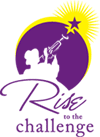I just spent a couple of hours at my home desk, sorting through bank statements and looking for some tax information. A highlight of this time was listening to an album called "Our New Orleans" -- twice! And that inspired me to write my first Second Line post.
"Our New Orleans 2005" was recorded not long after Katrina and its aftermath wreaked havoc on the city. It's a benefit CD, with net proceeds going to Habitat for Humanity to aid those affected by the hurricane. So with that context, the album has a particular poignancy. "Do You Know What It Means to Miss New Orleans?" sung by someone who might have lost his home -- "What a Wonderful World" performed despite the devastation -- Randy Newman singing "Louisiana 1927," about a devastating hurricane from the last century.
Blues, Zydeco, Cajun, Dixieland, and more -- and each cut is great! When you go to New Orleans, you'll be treated to some great music, whether you go out to a club, walk around Jackson Square, or simply attend official AALL events (where I'm sure they'll have wonderful bands).
The liner notes are by Nick Spitzer, a professor of folklore at the University of New Orleans and the host of Public Radio International's American Routes. One anecdote I like: Pianist, songmaker, and producer Allen Toussaint spoke with remarkable calm after the storm: "My Steinway, my records, my arrangements, my studio -- it's all gone. I had eight feet of water in my house near Bayou St. John." He escaped from his drowning city with little more than the clothes he had on, and a few family keepsakes. Dressed in a new suit with matching silk tie and pocket-handkerchief, Toussaint added, "But the spirit didn't drown. I still have my music. Give me a hammer. I'm ready to do my part."
Check out Nick Spitzer's multimedia presentation, Rebuilding the "Land of Dreams": Expressive Culture and New Orleans' Authentic Future, on Southern Spaces (Aug. 29, 2006). It includes some of the same musicians and music as the CD.
With a funky new rendition of his classic call to action -- "Yes We Can Can," Toussaint strikes a blow for the collaborative labor, good will and essential soul it will take to rebuild New Orleans -- not so much materially as spiritually.
Read more!



